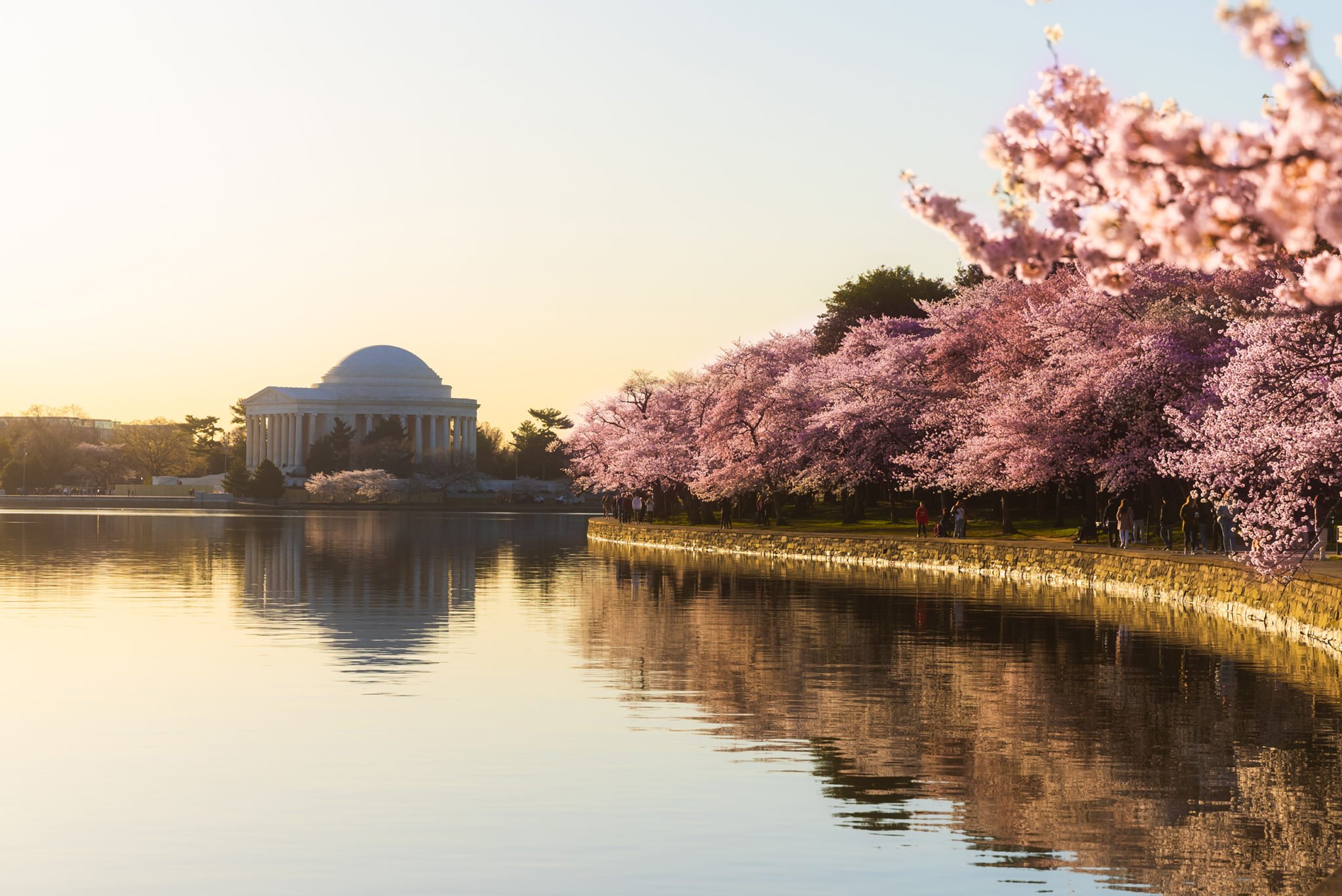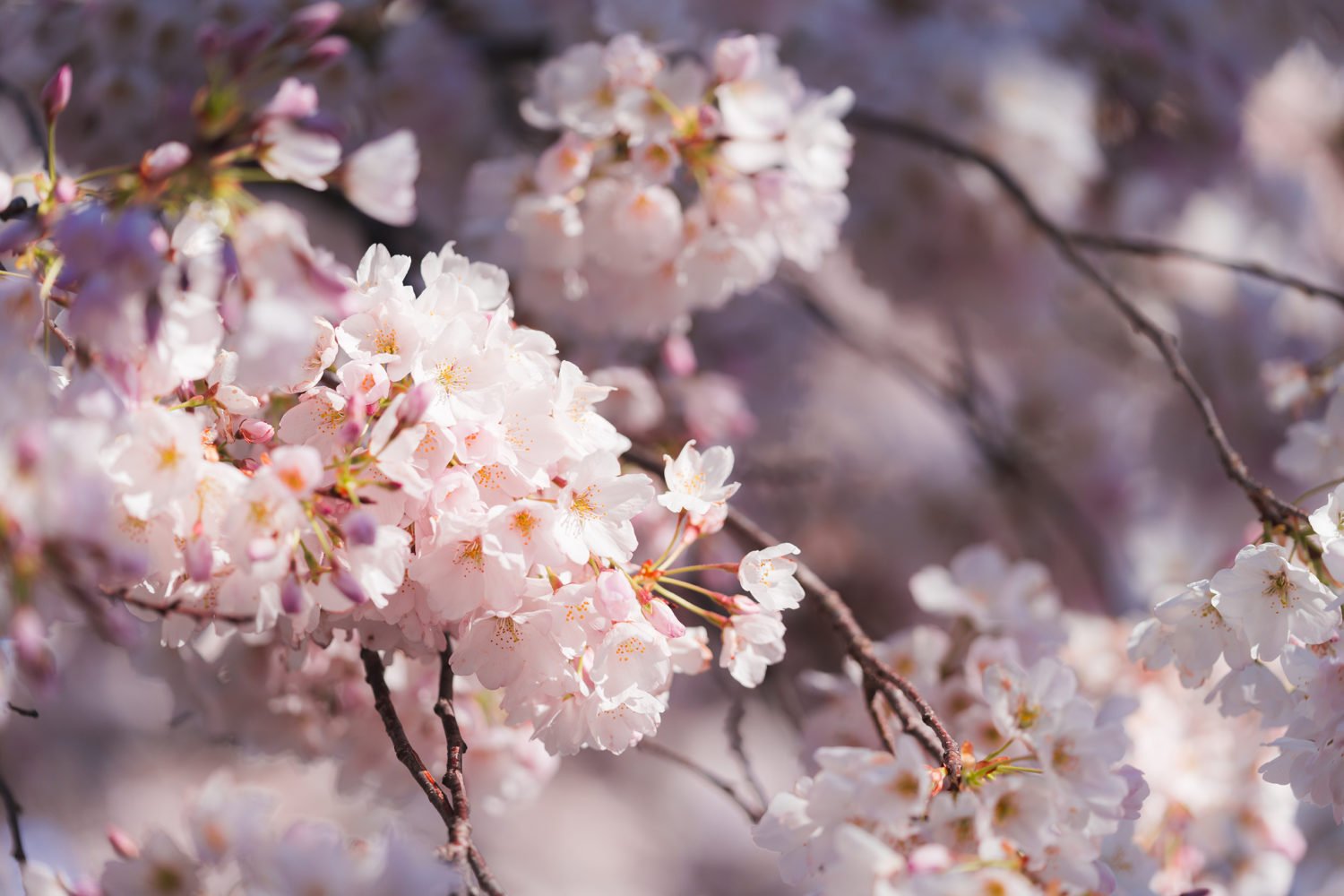DC in spring is a cornucopia of beautiful cherry blossom trees and with the iconic flowers come lively events and sakura cocktails—but also the need for nasal spray. While the city celebrates with pink festivals and pink accessories, if you suffer from allergies, you might be on-theme with a pink nose.
This is due to overwhelming amounts of pollen. When it comes to tree pollen, the pollen count is considered moderate if the range is from 15 to 89, and high if it reaches 90 or above. DC’s pollen count is at currently at 69, which is definitely high enough to bring annoying symptoms like itchy eyes, sneezing, and blocked sinuses.
If you suspect that the city’s pollen season is starting earlier than in the past, your instincts are right, according to Mark Scarupa, director of the Center for Urticaria and Angioedema and clinical faculty member at Johns Hopkins Asthma & Allergy Center.
“This season thus far, we have seen a week of significant tree pollination in the last week of February,” Scarupa says. “This is early by historic norms but not terribly atypical for the past 5-6 years. Pollination simply has become far less predictable than what it was 10-20 years ago and this almost certainly is due to less predictable weather patterns in general.”
Warmer temperatures translate to quicker cherry blossom blooms and longer allergy seasons. And with spring getting a headstart, some medical professionals like Dr. Sally Joo Bailey, diplomate of the American Board of Allergy & Immunology and assistant professor at Georgetown University Hospital, speculate that this year’s pollen season may be more severe.
“Unfortunately, with the warmer temperatures and longer days starting sooner this spring than previously, it looks like it’s going to be a worse season this year than last year,” Bailey says.
However, there are ways to remedy your symptoms—starting with shutting your windows. Windborne pollen can be a significant irritant. The wind can push pollen along for miles, and because it can be anywhere from 12 to 120 times smaller than a strand of human hair, it can easily fit through your window screen. A closed window protects you. “Keep your windows closed in your home and in your car especially on windy days,” says Bailey.
Similarly, Bailey recommends rinsing off any pollen that may have accumulated on you. “When you come home for the day, shower, wash your hair and change into cleanly washed clothes,” she says. “You can use saline rinses for your eyes and nose to rinse the pollen out of those areas as well.”
If you’re feeling experimental, eating local pollen via honey may desensitize you to it. But be aware: experts are iffy on this approach. “Some people report [eating] bee pollen helps temporarily and others report reacting more to the pollen,” says Bailey.
For a more tried-and-true method of coping with allergy symptoms, you can always opt for nasal steroid sprays and antihistamines. And if that isn’t helpful enough, it may be time to see an allergist. “Patients symptomatic despite over the counter medications should consider evaluation to better understand their options,” Scarupa says.



















